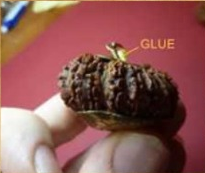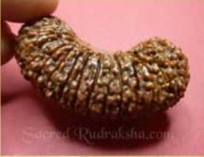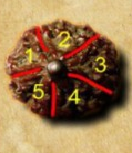ADDRESS
-
Address: 206, 2nd Floor, Shivam Chambers,
S. V. Road, Goregaon (W),
Mumbai-400062.
- Email: info@rudrajyoothi.com
- Website: www.artlmumbai.com
- Toll Free: 022-67080789

For observing the inner layers & inner structure of Rudraksh bead & identify matured seed of Rudraksh.

To Test exact size of Rudraksh in diameter & weight of Rudraksh because weight is to determine the density of Rudraksh.

To find out outer layer of Rudraksh it helps to find out manual carving & crack in beads.

To check Artificial joints & find out for esence of plastic glue in Rudraksh bead.

One large bead is made from many beads glued together, only through heat such as boilling can one see the effects of the cheats.

If you see such a perfect bead at a rediculous price then it must be a fake. There are many sellers around temples and online selling such beads.

This bead looks impressive being 38 mukhi, but first test it failed to float in a glass of water. Close examination the mukhis look unnatural, too precise. It is constructed using many segments of the other beads to create one large bead and held Join together with glue. When sliced this fake Rudraksha, once can see the join of a different piece placed carefully to match the contour of the bead.

The middle one, is hard as bullets, whilst the others are softer and hollow inside. The yellowish fibre can be seen under microscope.


Segments of the beads Segments Here very carefully segements have been arranged to look natural.

The amount of seeds must be the same as seeds. Xrays can reveal this, or by carefully studying the bead under high powered magnification.
Numerous Rudraksha sellers who offer 'lab-tested and certified' Rudraksha beads from one or more laboratories, in maximum of these cases, the value of the so-called certificate or certification is not reliable. because these labs are fake or non-existent as these certificate is a deception.
Many times, the Rudraksha sellers who claims to sell "certified orignal Nepal Rudraksh" these so-called labs/certificates which are only on paper and lack any certified gemmologist or equipment owned by them.
They sell to retailers and unsuspecting buyers, who ends up purchasing fake Rudraksha beads with these "self-made certificates" which are not geniune. As a result, there is a great deal of ambiguity in these labs certificate and the certification process.
A simple inquiry into certification process and equipment owned by the lab will reveal the lab's legitimacy.
The main idea is that the lab's credibility is only as good as the person or organization certifying the beads in the lab.
Since 2010, the Rudraksha business has grown exponentially, and many of those who have entered have only the intention of making a profit. They know less about Rudraksha beads quality, and testing methodelogy. They are able to sell to buyers who, on average, do not have much knowledge.
There are sellers which provide x-ray & certified Rudraksh also but a study of certificates from them has shown the below discrepancies: They keep silent about incomplete lines in a mukhi and classify them as complete. Note that if a mukhi line of a Rudraksha does not run from one end and completes at the other end or just partial in that case the Mukhi/line is not counted & bead will also not work for the rest of the lines that are complete.
They classify the bhadraksha beads as Rudraksha. Bhadraksha do not have a natural hole in the centre and they do not work like Rudraksha. Commonly one mukhi Nepal rudraksha is sold in the market, is a bhadraksha bead from Haridwar or South India.
They classify beads that are manually glued together and also fake lines created manually as genuine and certified, which is commonly seen in Trijuti and Gauri Shankar,1 mukhi, 2 mukhi, or 14 mukhi and higher mukhi beads. The x-ray by and expert will show that there are seeds inside but it requires a lot more expertise and knowledge to know the malpractice done
They classify the giant Rudraksha beads from Papua New Guinea as Nepal Rudraksha beads.